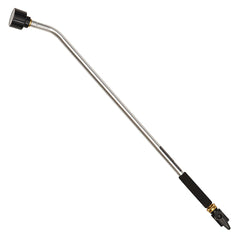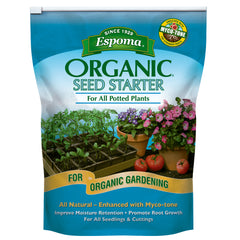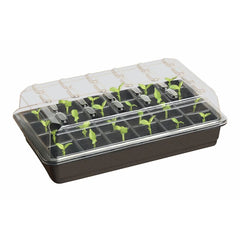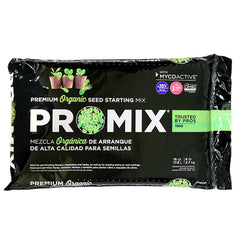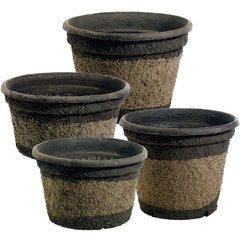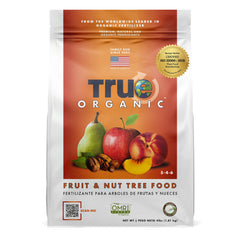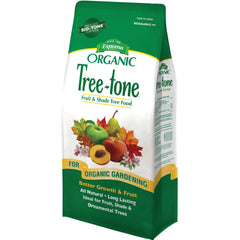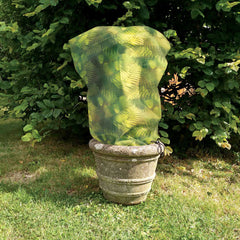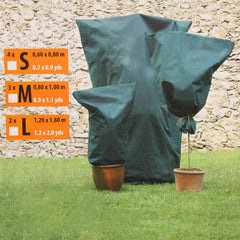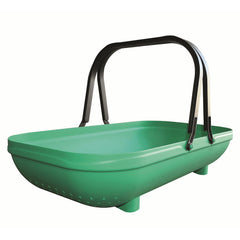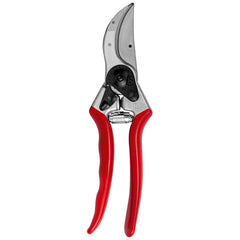
Herbaceous
Papaya Tree
USDA Zone: 9–11
Lifecycle: Perennial
Mature Size: 10–15 ft. tall
Native Region: Central America
Sunlight Requirements: Full Sun
Learn about: Care, Seeding, Planting and Potting, Feeding, Winterizing, Harvesting and Pruning

USDA Zone: 9–11
Lifecycle: Perennial
Mature Size: 10–15 ft. tall
Native Region: Central America
Sunlight Requirements: Full Sun
Learn about: Care, Seeding, Planting and Potting, Feeding, Winterizing, Harvesting and Pruning
Although they’re called trees, papaya care is closer to that of plants. Whether indoors or outdoors, they grow best with at least 6-8 hours of direct sun per day. Try to keep temperatures between 70-80 degrees and humidity above 60%. Water the trees whenever the top 2-3 inches of soil are dry.
Papaya trees are susceptible to pests like spider mites, aphids and roundworms. Watch for signs of infestation and take the appropriate action. Some people place paper bags over still-developing fruits to block pests; container planting also adds protection.
To grow papaya from seeds, place them about a quarter-inch deep in moist seed-starting soil. Since not every seed will germinate, put several seeds in each pot or tray. Place the containers in a warm, bright area and water the soil just enough to stay moist. They typically germinate in about two weeks. Once the first seedling in each container gets to about three inches tall, leave this seedling and discard the rest.
You should plant or repot papaya trees early in the warm season so they have the most time to establish. This may be between March and June depending on the region. Plants can be moved to the ground when they are roughly one foot tall; place them 8-10 feet apart so they have room to grow. If you can, plant ground-based papayas near buildings, patios, walls and similar areas as they create a "heat sink." Putting them on the south or southeast side offers additional protection. Papayas are great container plants, too. They have shallow roots, so lean toward pots that are more wide than deep and transplant as needed.
The papaya tree loves well-drained soil full of nutrients. Fertilize young trees every two weeks with a balanced mix. For mature trees, feed them once a month; use a high-phosphorus fertilizer for root development and a potassium-heavy fertilizer for fruit growth. You can also use organic fertilizers like compost and fish emulsion. When planting, add compost or fertilizer around the base of the tree; do not place it directly in the planting hole.
As tropical plants, papaya trees are very sensitive to cold. Move container trees indoors before the first frost while ensuring they still get plenty of light (whether sunlight or grow lights). You can keep humidity levels high by grouping plants or adding a humidifier. For outdoor papaya trees, cover them with blankets or frost sheets and add a wrap and/or mulch around the base.
While pruning papaya plants isn’t necessary you can do so to encourage better growth and make them more manageable. Do so in the early spring before the buds start to open. Remove branches that are diseased, dead, rubbing or crossing. Also cut away any stems at the base as they weaken the rest of the plant.
The first papaya harvest will arrive 9-14 months after initial planting. Fruits are ready to harvest when they start changing from green to yellow; simply twist the fruit off the stem or cut it with shears. Leave the fruit on the counter for a few days so it can fully ripen before eating. A ripe papaya fruit stays good for up to a week.




